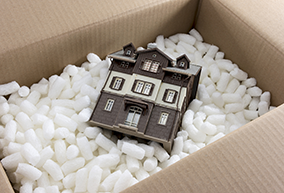
The last thing you need after a long moving day is to discover that a valuable item was damaged. That’s certain to dampen your spirits when you’re just getting settled into your new home. Here are some packing tips to help ensure that doesn’t happen:
- Avoid worn-out or damaged boxes as they are more likely to tear open during a move.
- Pack glass and similar items in bubble wrap or foam chips – but not too tightly. Include just enough to ensure there’s no rattling.
- Use small boxes for heavier items. A big box of books is difficult to lift. (Experts say a box shouldn’t weigh more than 50 lbs.)
- Use anti-static packing materials for sensitive electronics, such as computers, cameras, and flash-drives.
- Purchase specialty packaging for items such as dishes, musical instruments, and valuable clothing. It’s worth the investment.
- Don’t pack a box so full that there’s a bulge.
- Wind and tie electrical cords.
Finally, if possible, personally carry irreplaceable items (such as family photographs) with you to your new home.




